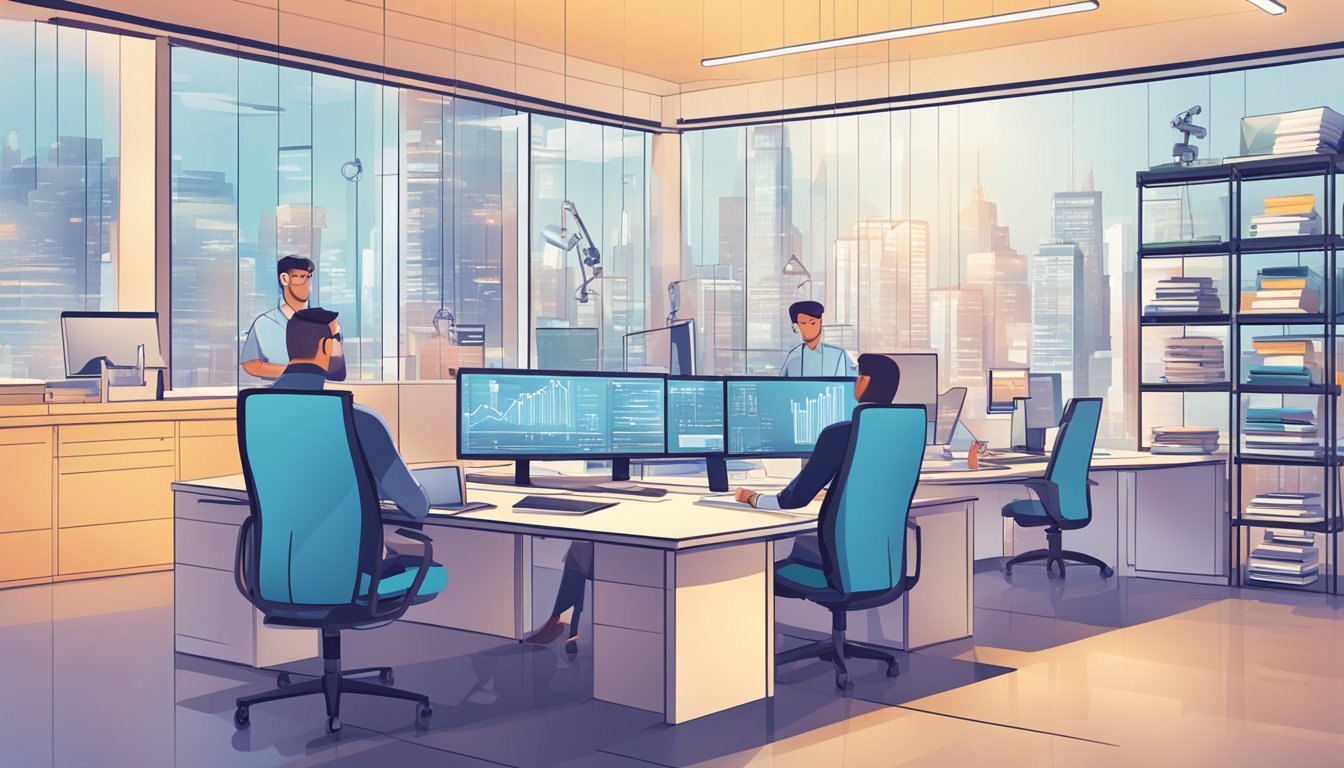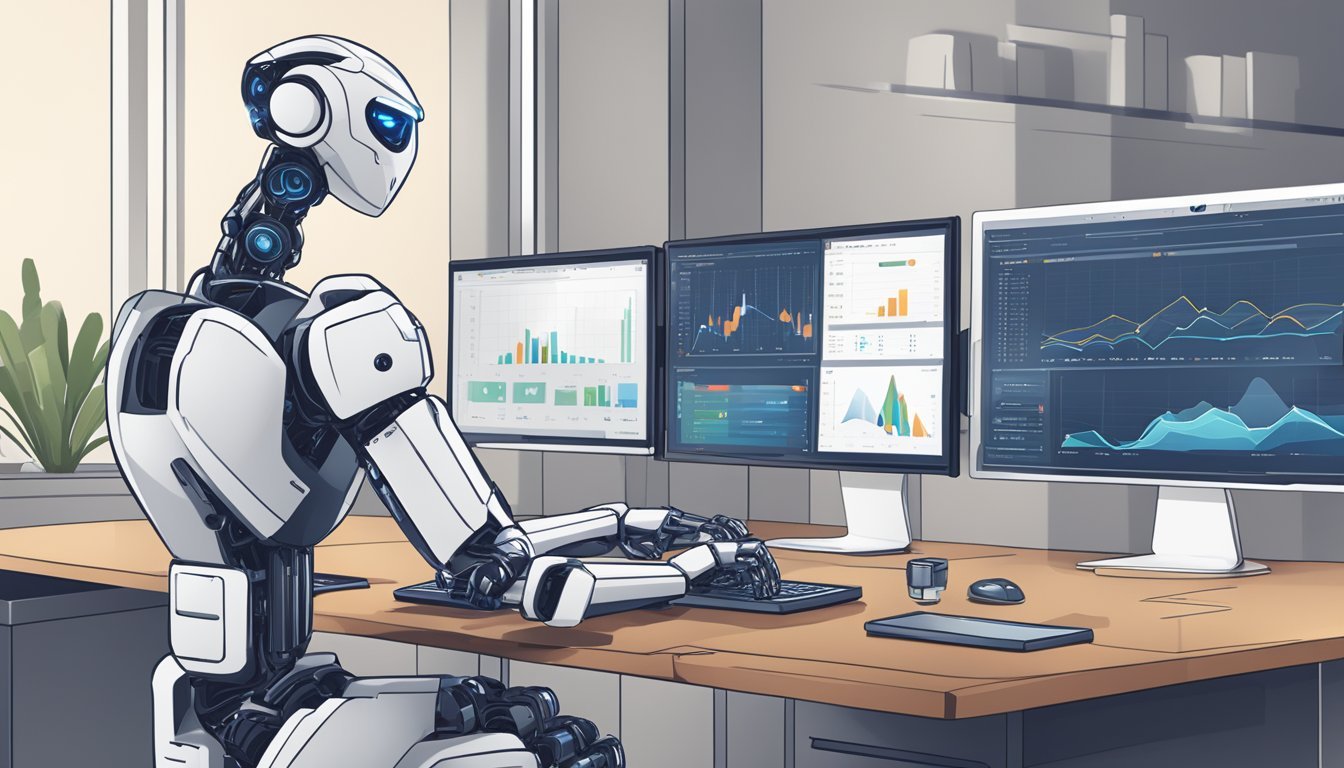AI in the Workforce: Navigating Job Evolution and Automation
Automating tasks with artificial intelligence (AI) is reshaping the landscape of work across numerous industries. With the advancement of AI technologies, many roles traditionally performed by humans are evolving to accommodate the capabilities of automated systems. Some occupations with repetitive or routine components are particularly ripe for this shift. As machine learning and other AI methods become more sophisticated, tasks within these jobs can be automated, freeing up human workers to focus on more complex, creative, or interpersonal aspects of their roles.
The evolution of work isn't uniform; it varies widely across sectors. In retail, for example, the introduction of self-checkout machines signifies a move towards automation, changing the responsibilities of cashiers who now often assume a more supervisory or customer assistance role. In customer service fields, AI chatbots are increasingly handling initial inquiries, allowing human customer service representatives to tackle more intricate customer needs.
As AI's influence grows, the future may hold a blend of human and machine labor, with each complementing the other's strengths. Humans excel at tasks that require empathy, strategic thinking, and deep expertise, while AI systems are unmatched in processing vast amounts of data and executing well-defined tasks tirelessly. The potential of AI in the workplace is to harness the best of both worlds. However, this technological leap also necessitates rethinking job designs, skills development, and workplace arrangements to ensure a smooth transition into the future of work.
The Impact of AI on the Job Market
Artificial Intelligence (AI) is redefining the landscape of work with shifts in job roles, industry operations, and economic structures. This emerging technology offers potential for significant increases in productivity but also poses challenges in the global workforce that necessitate adaptation.
Job Displacement and Creation
AI is a double-edged sword in the job market. On one hand, automating mundane and repetitive tasks leads to displacement in sectors like manufacturing and retail, as machines can perform certain jobs more efficiently than humans. For example, robotic assembly lines in manufacturing have reduced the need for manual laborers. On the other hand, AI-driven technologies are creating new roles in the gig economy and the jobs of tomorrow, particularly in fields such as AI maintenance, data analysis, and process optimization.
Industries Affected by Automation
The extent of automation's influence on industries varies widely. In healthcare, AI is used for diagnostics and personalized treatment plans, changing the roles of medical professionals but not replacing them. Finance sees AI in algorithmic trading and fraud detection, where precision and speed are key. Retail has experienced a shift through online recommendation engines and automated inventory management, transforming the shopping experience and operation methods.
The Role of AI in Economic Growth
AI stands as a pivotal contributor to economic growth. Increased productivity and new innovations driven by AI can result in lower production costs and new markets. However, it's important to recognize that the benefits are not distributed evenly across the global workforce, prompting discussions on policies and training programs to support affected workers. The use of AI in automating tasks not only streamlines operations but also frees human workers to focus on more complex and creative tasks, fostering an environment for economic expansion.
How AI Is Changing the Nature of Work
Artificial intelligence is altering the work landscape, transforming jobs, and shifting the skills required for many professions. Workers are experiencing an evolution in tasks and responsibilities, fueled by the capacities of AI to handle complex problems and enhance human capabilities.
Routine Tasks vs. Creative Jobs
Routine tasks, characterized by their repetitive nature, are increasingly being automated by AI technologies. This shift has profound implications for jobs largely composed of such tasks. As AI systems become more sophisticated, their ability to carry out these tasks accurately and efficiently surpasses human performance. For example, data entry and processing jobs, which once consumed substantial time from workers, are now expedited through AI algorithms.
On the other hand, jobs demanding creativity and problem-solving are experiencing a different kind of transformation. AI fosters a creative partnership, where professionals leverage their ingenuity alongside cognitive computing's capacity to process vast amounts of information. This synergy is enabling new avenues for innovation and the conception of entirely novel job roles centered on creative collaboration.
Augmentation of Human Tasks
Augmentation is the enhancement of human tasks through AI, where technology acts as an assistant rather than a replacement. Here, AI complements human intelligence, allowing workers to perform their jobs with greater efficiency and effectiveness. In the medical field, for instance, diagnosis and treatment are augmented by AI, empowering healthcare professionals to provide better care by analyzing patient data and suggesting potential treatments.
This cooperative dynamic not only preserves but enriches jobs. It requires workers to acquire new skills and adapt to an environment where AI tools aid in problem-solving and decision-making processes. Hence, skills training becomes a pivotal aspect of job evolution, ensuring human workers remain an integral part of the augmented workforce.
Shifting Skills and Responsibilities
The integration of AI into the workplace demands a shift in skills and responsibilities. Today's jobs require a blend of technical know-how and soft skills like communication and collaboration. Professionals are expected to guide AI systems and interpret their outputs, necessitating a continuous learning curve and often leading to skills training becoming an ongoing component of professional development.
Human tasks are being reframed to focus more on oversight and strategic inputs, which are areas where AI is currently less adept. As a result, the responsibilities of workers are migrating towards roles that involve the management of AI resources, cross-functional teamwork, and complex problem-solving that utilizes both artificial and human intelligence. This adaptation reflects the transformative potential of AI to redefine not just how tasks are performed, but the nature of work itself.
Technological Advancements and Challenges
The landscape of the workforce is undergoing a seismic shift due to advancements in artificial intelligence, which present both exciting opportunities and significant challenges. Here, we address the critical dynamics shaping the integration of machine learning and big data analytics, the ethos governing their use, and their burgeoning role in creative domains.
Machine Learning and Big Data Analytics
Machine learning algorithms, fueled by big data, are becoming increasingly sophisticated, paving the way for AI to automate complex tasks across various industries. Big Data Specialists are now critical in harnessing and interpreting the vast amounts of data generated daily. However, one challenge is ensuring data security, as the potential for breaches grows with the proliferation of data.
Ensuring Ethical and Responsible Use
The responsible use of technology involves addressing potential bias and discrimination in AI systems. It's imperative to implement mechanisms to detect and mitigate bias, ensuring that the AI acts in a fair and ethical manner. This includes monitoring for data bias originating from skewed datasets which can inadvertently lead to unfair outcomes.
Integrating AI in the Creative Industries
AI's integration into the media, entertainment, design, and marketing sectors redefines how content is created and distributed. AI can enhance creativity, but the challenge lies in nurturing a collaborative synergy between human and machine, preserving the originality and emotional depth that only human creativity has traditionally been thought to bring.
Adapting to the Future Work Landscape
The landscape of employment is undergoing a transformative shift, with artificial intelligence (AI) reshaping industries and education systems. Adapting to these changes is imperative for both professionals and institutions, as well as for policy formation to support workforce transitions.
Educational and Professional Development
The integration of AI into the workplace necessitates a fresh approach to educational and professional development. Educational institutions and professionals must prioritize reskilling and upskilling to stay relevant. According to the Jobs of Tomorrow Report, there will be a growing demand for skills that AI can't easily replicate. Consequently, education systems are tailoring curricula to focus on critical thinking, creativity, and emotional intelligence—skills that complement AI technology.
Government and Organizational Policies
Governments and organizations are crafting policies to navigate the new AI-driven employment landscape. This includes the institution of social safety nets and workforce transitions strategies to minimize the impact on displaced workers. The World Economic Forum underscores the importance of assessing AI's impact on jobs, advocating for safeguards that ensure a future where technology augments rather than replaces human labor.
The Emergence of Next-Generation Jobs
The advent of AI is not just about job displacement; it's also about the growth of new career paths. Next-generation jobs are emerging in various industries, demanding a novel set of skills and competencies. For instance, there's a surge in roles such as AI ethicists, data scientists, and automation specialists, indicating dynamic sects of employment opportunities ushering in an era of growth. These roles highlight the evolving nature of work where people and AI collaborate, leading to innovation and progress across sectors.
Key Strategies for Navigating AI-Driven Changes
As organizations prepare for shifts in the labor market driven by AI, decisive strategies are essential. These strategies should focus on education, harnessing the potential of generative AI, and addressing income inequality through equitable growth.
Building a Culture of Lifelong Learning
Developing a culture of lifelong learning is paramount in an AI-adaptive workforce. This culture nurtures an environment where continuous education and skills training are integrated into the flow of work. Firms need to implement comprehensive reskilling revolution plans, which may include partnerships with educational institutions or in-house programs to keep up with the demands of an evolving labour market.
Promoting Equitable and Inclusive Growth
The integration of AI into the workplace should be guided by principles of equity and inclusivity to minimize income inequality. Key measures include:
Ensuring that AI-driven transformations benefit all sectors of the workforce
Equal access to opportunities for upskilling
Transparent decision-making processes that are sensitive to the diverse impacts of automation
Innovations in AI and Future Prospects
AI is a catalyst for innovation. Harnessing its potential requires forward-looking planning to embrace opportunities while also preparing for challenges. Organizations should monitor developments in generative AI, which can be a game changer in many fields, requiring dynamic strategies to keep abreast of technology. Companies must stay adaptable, scaling up pilots that demonstrate success and iterating quickly on feedback.


